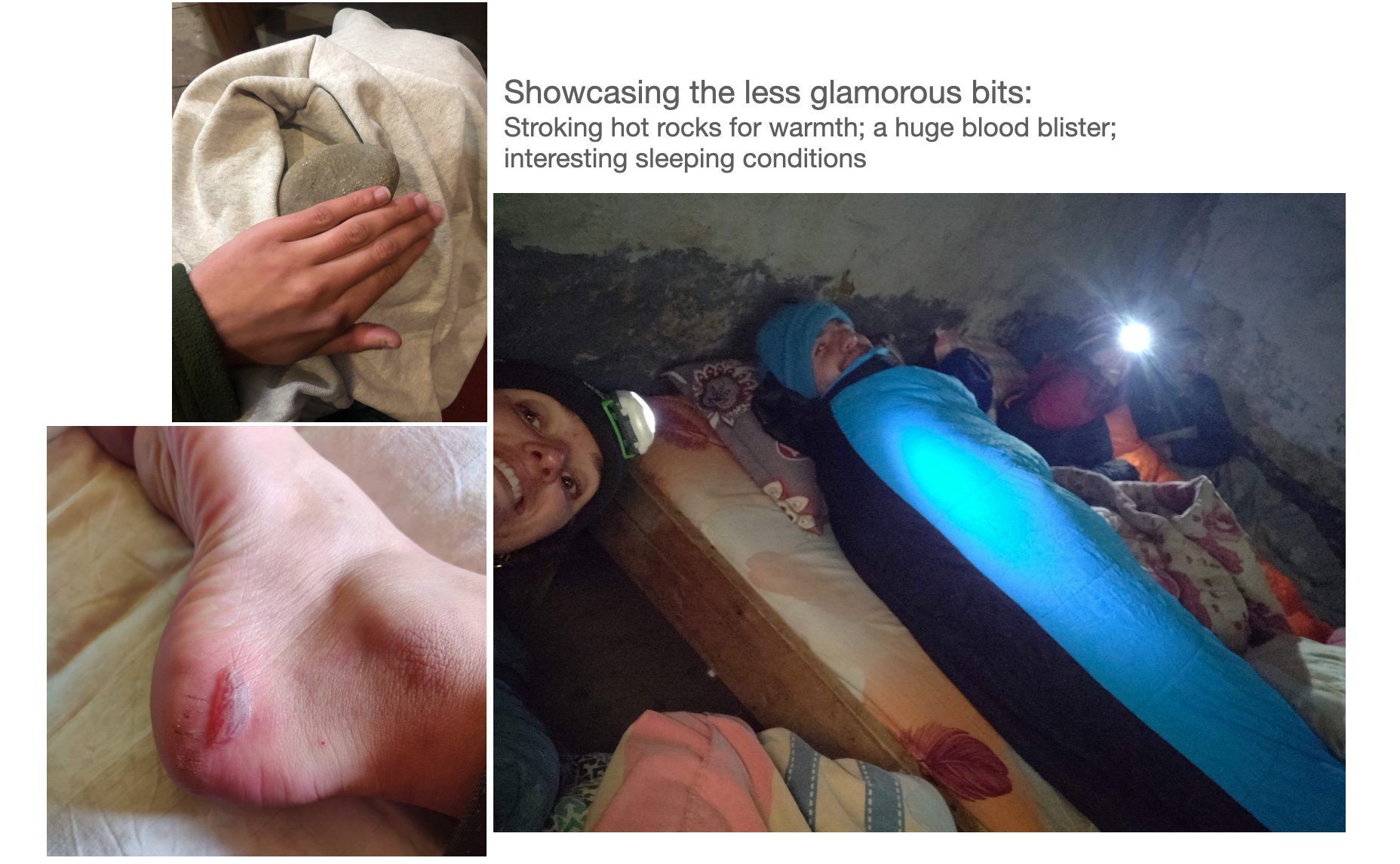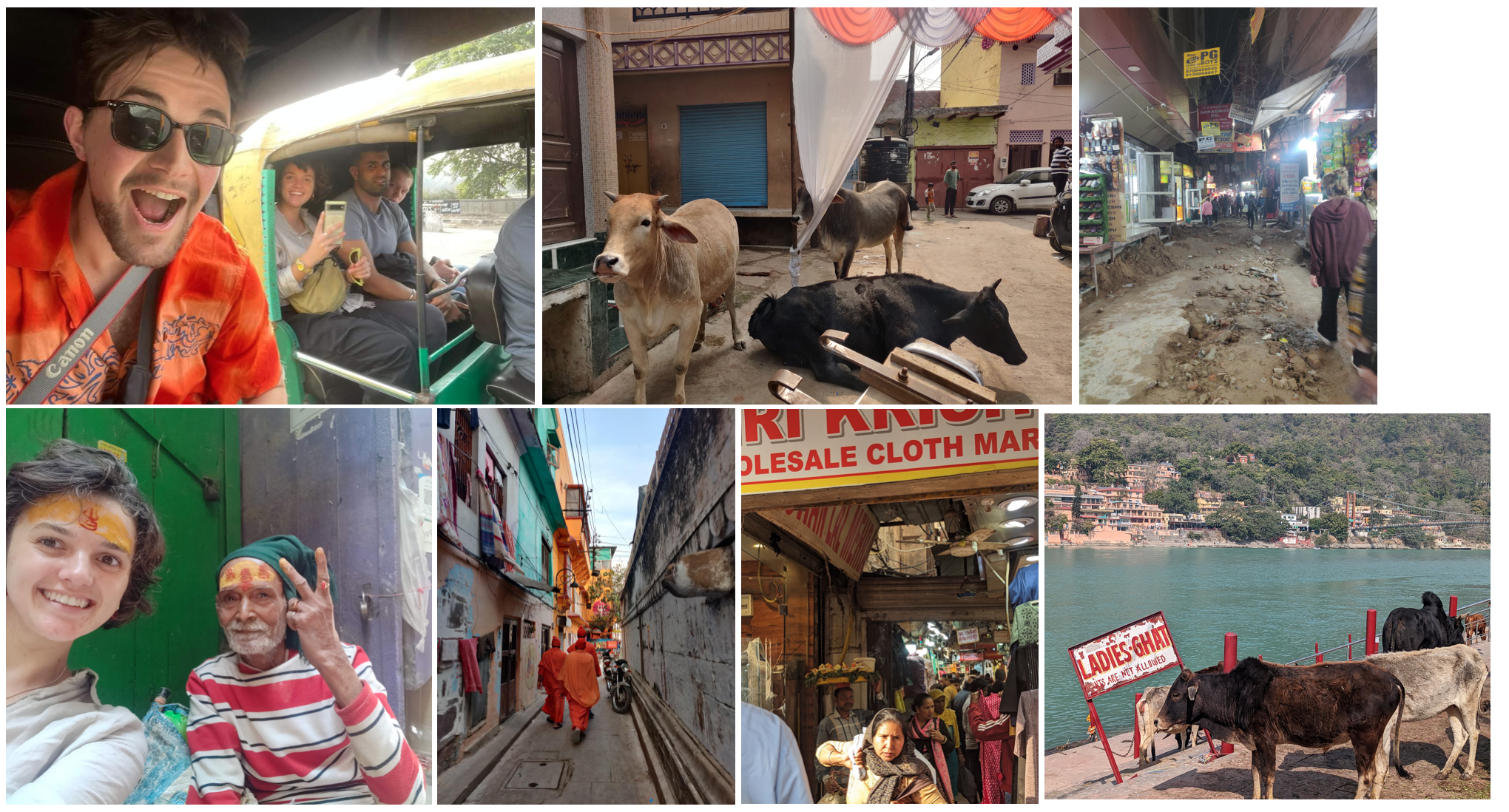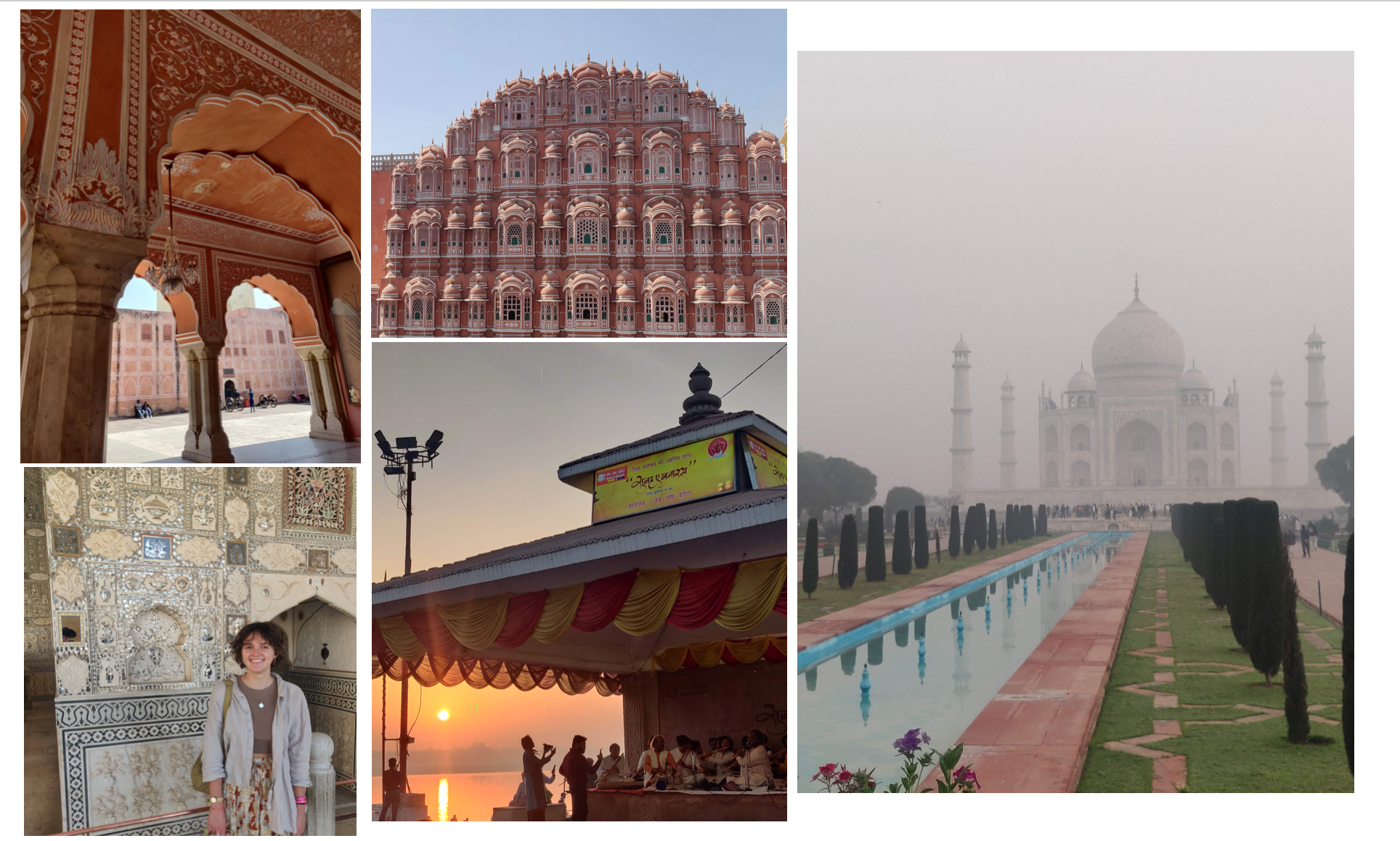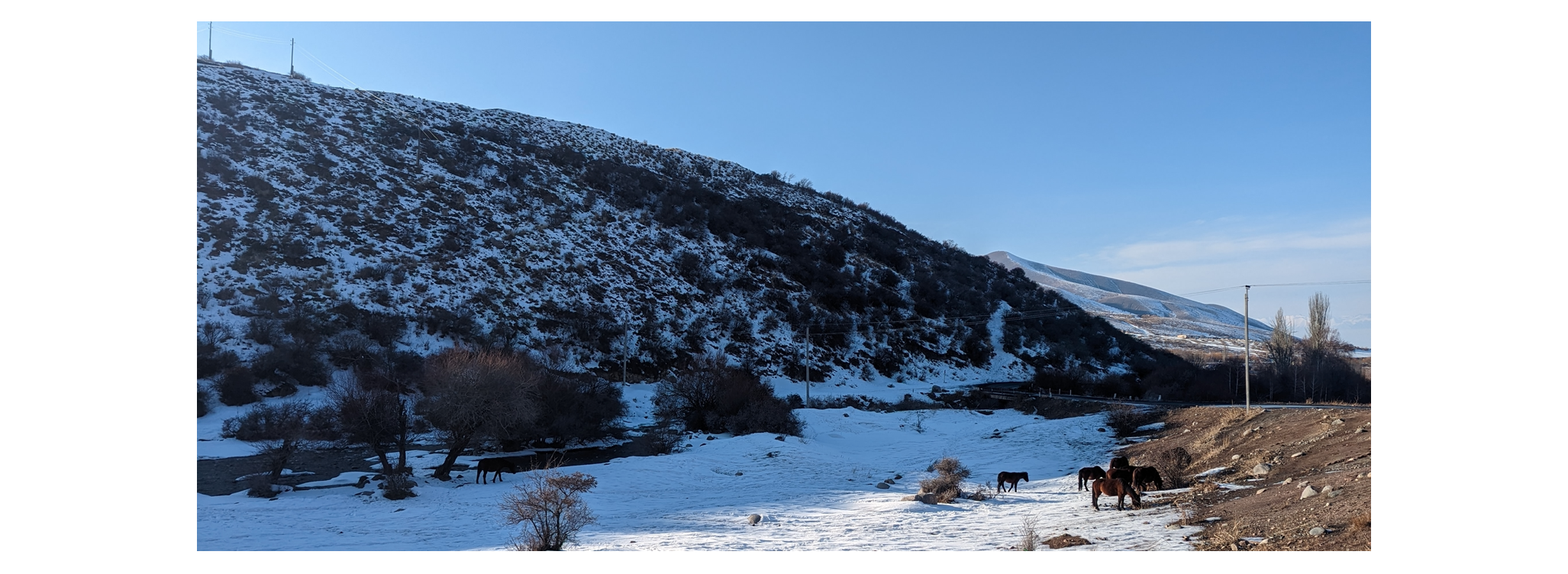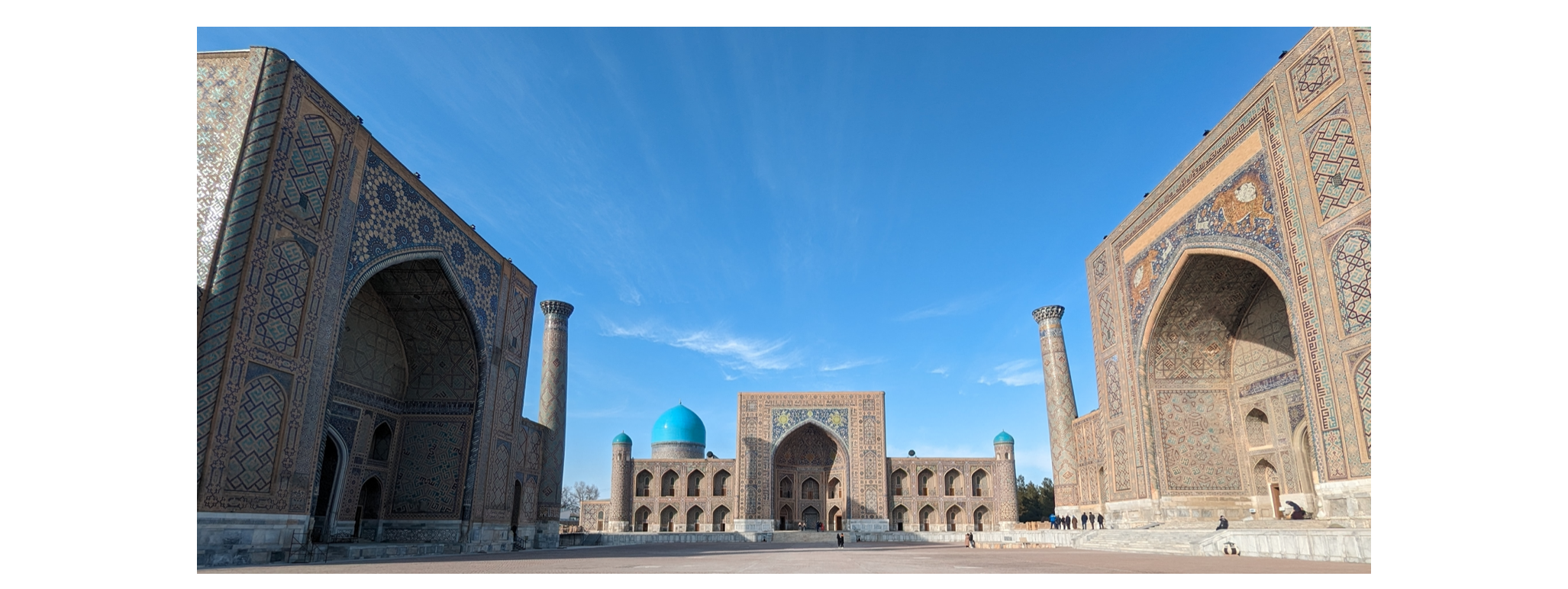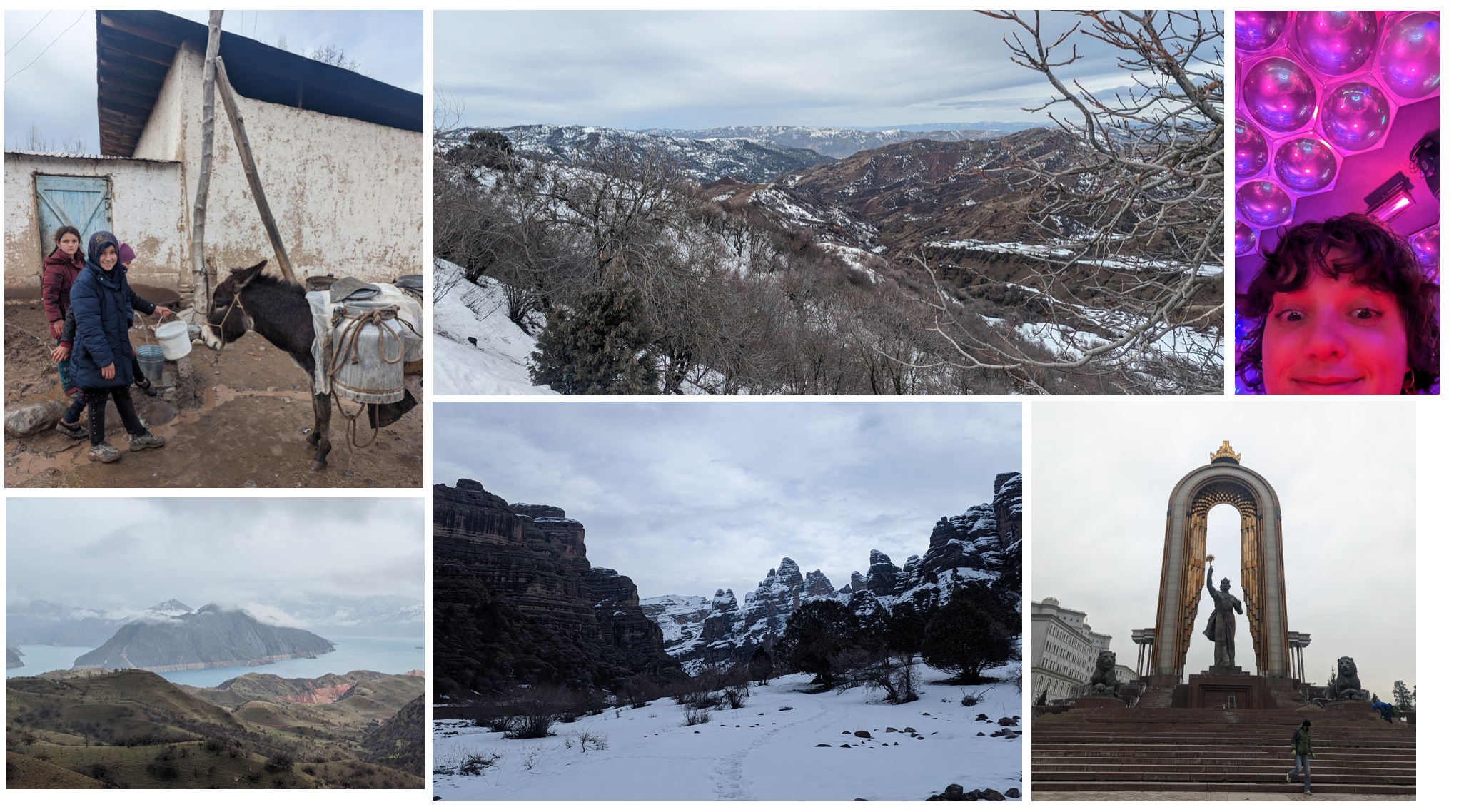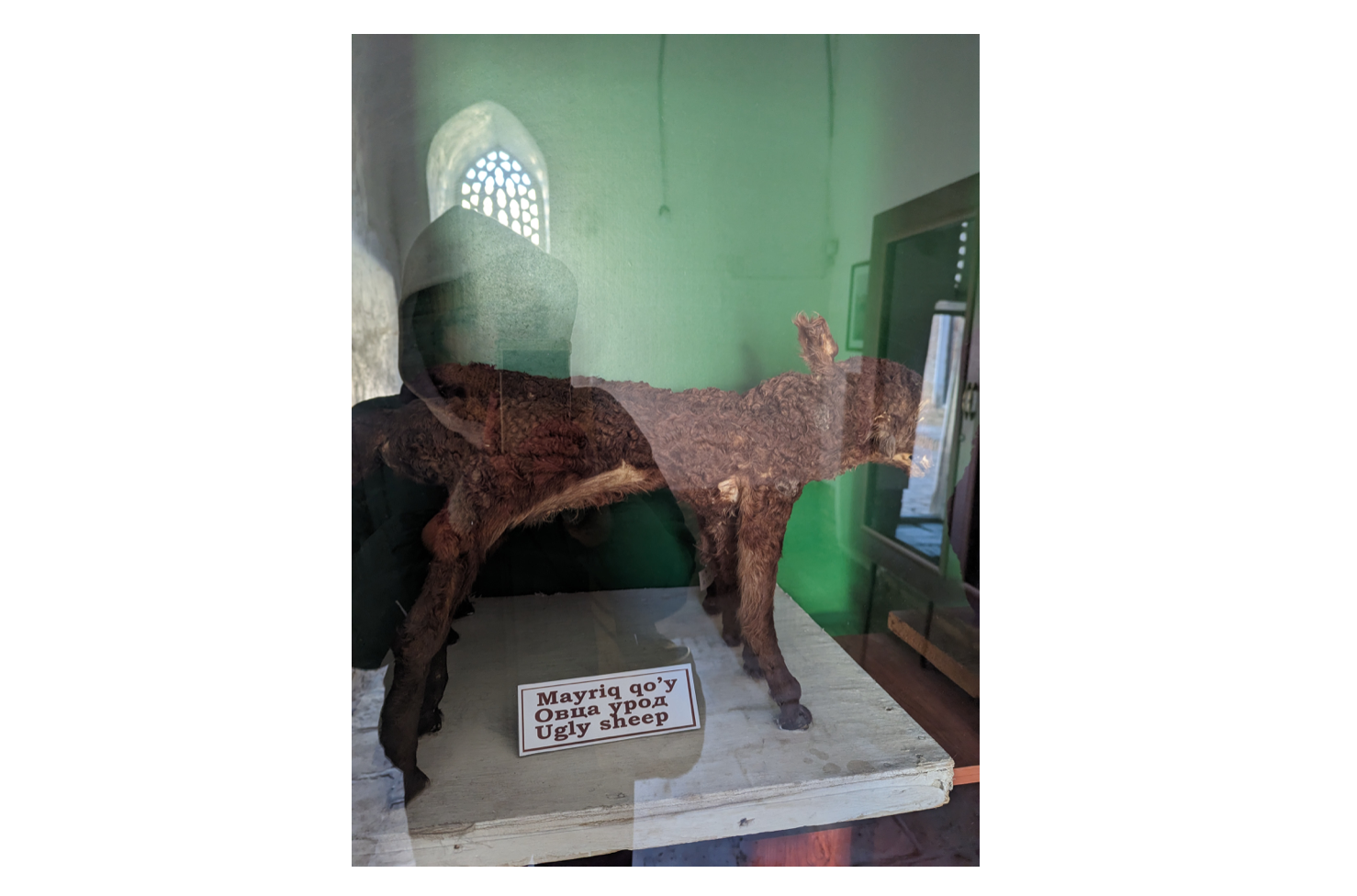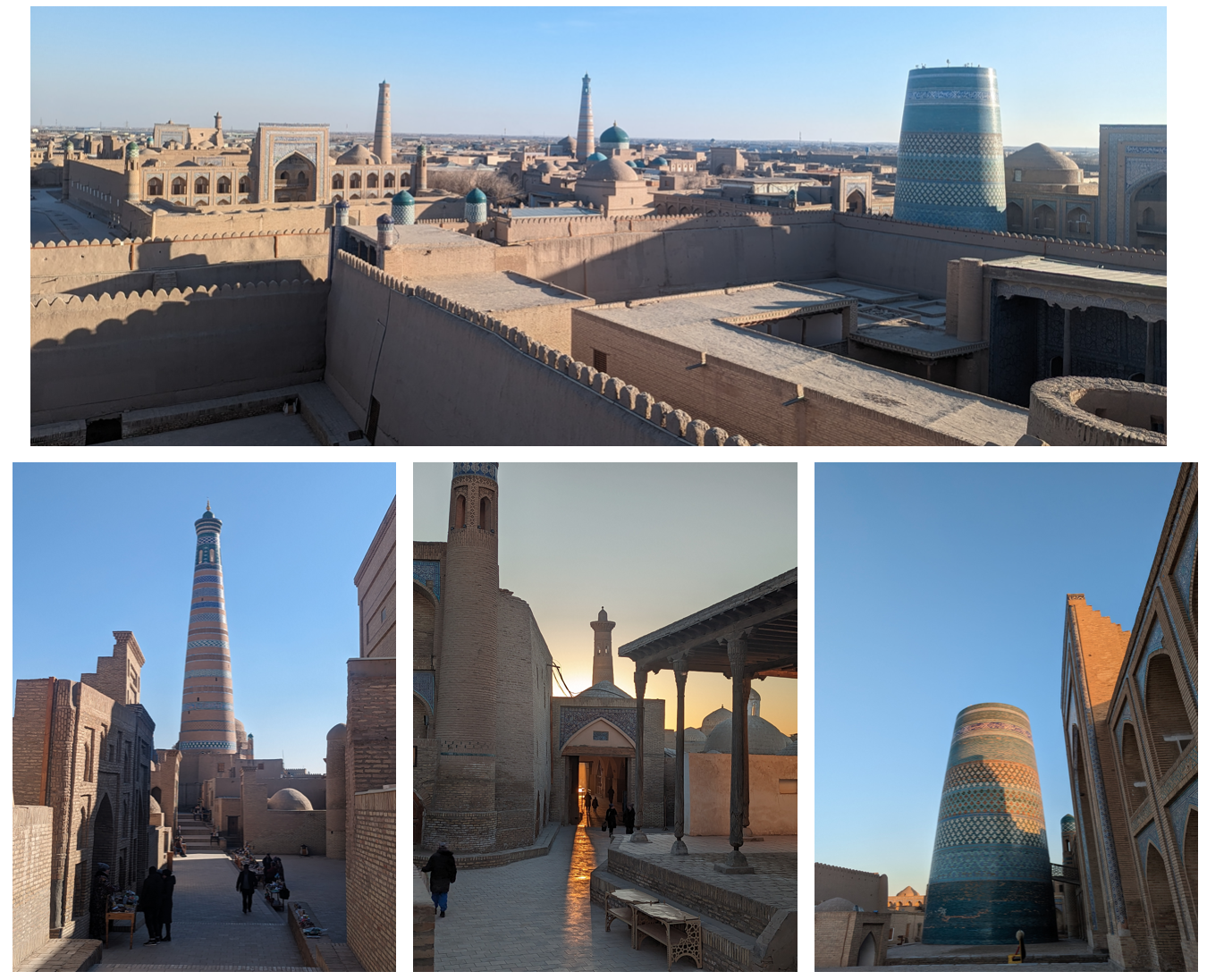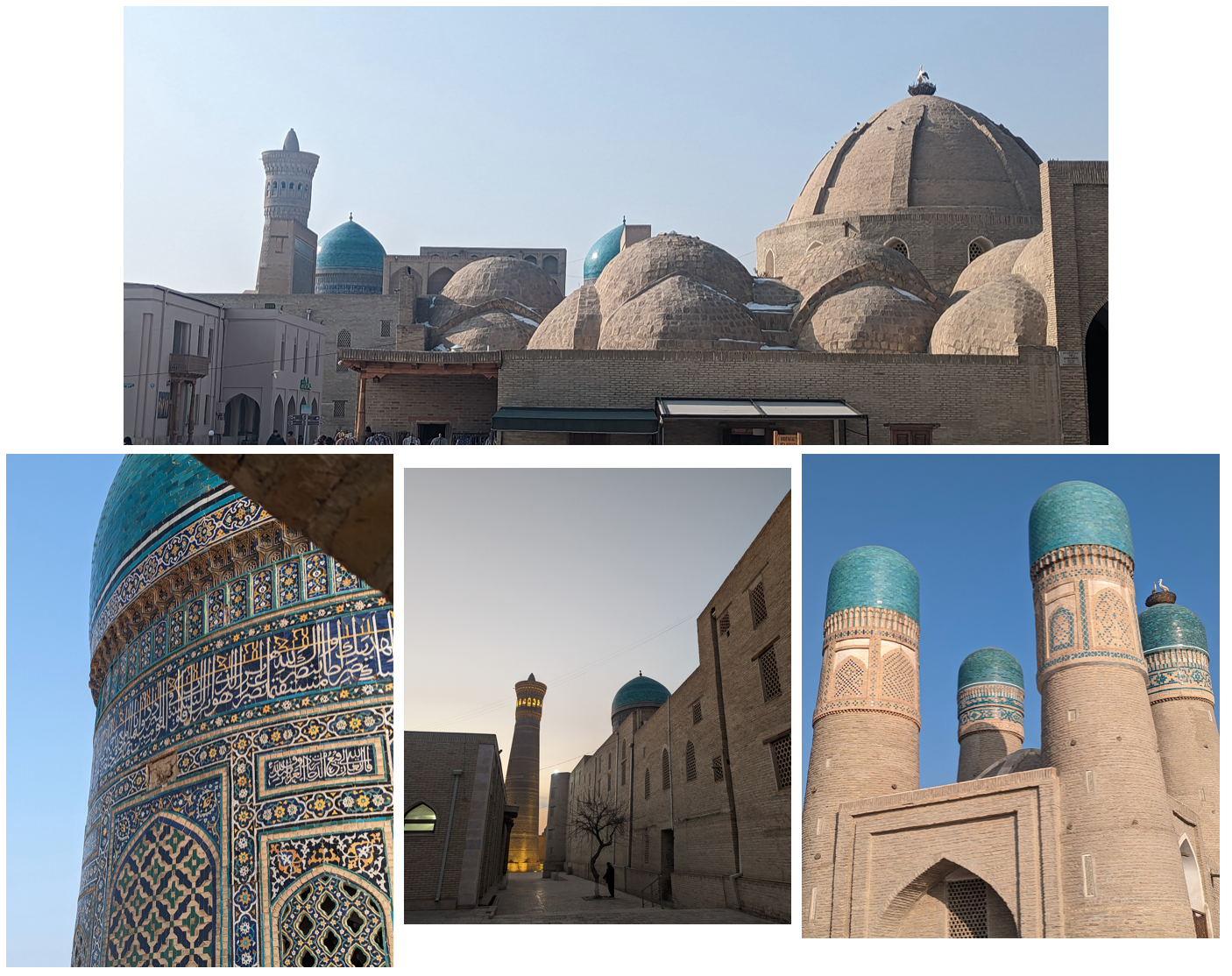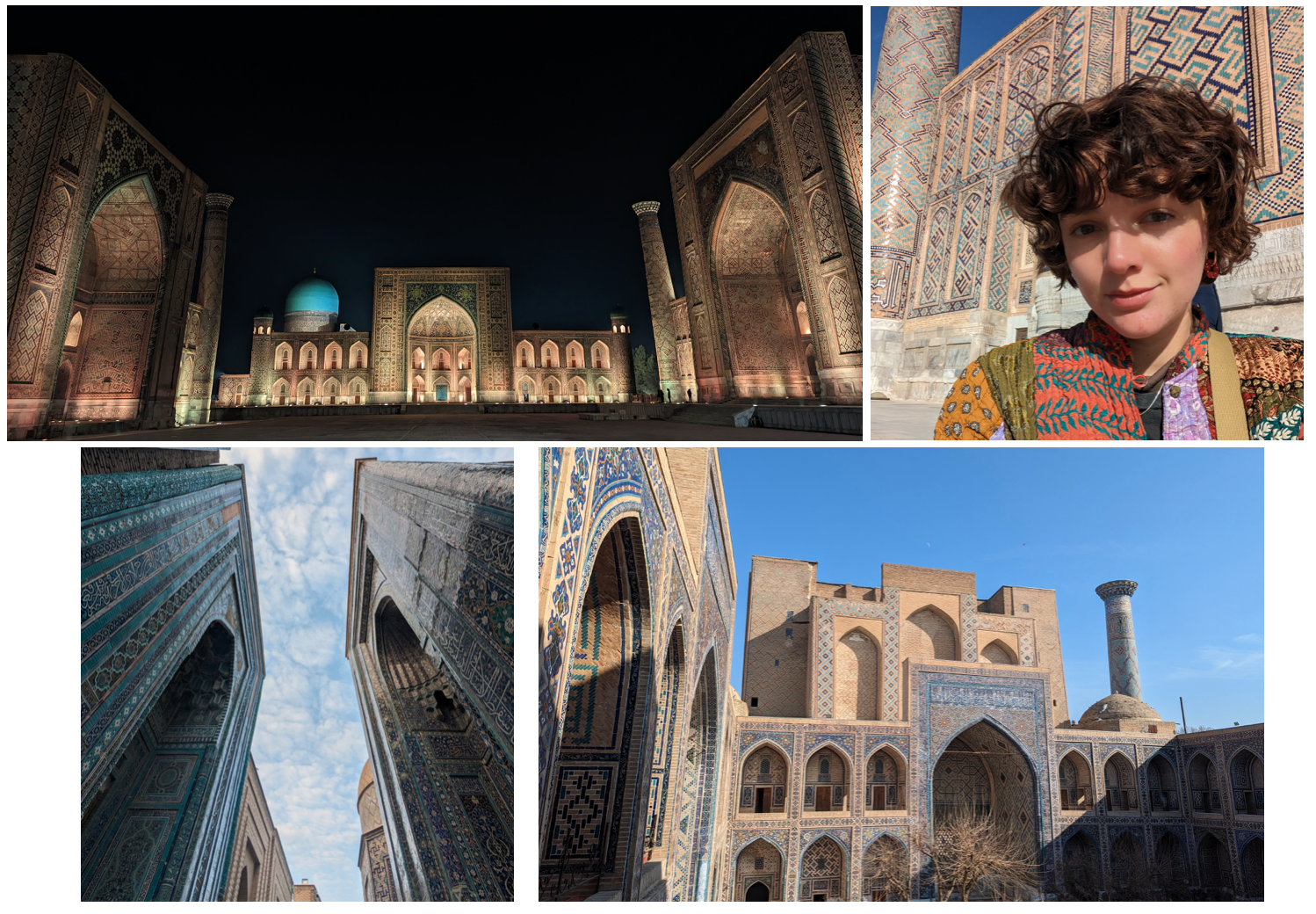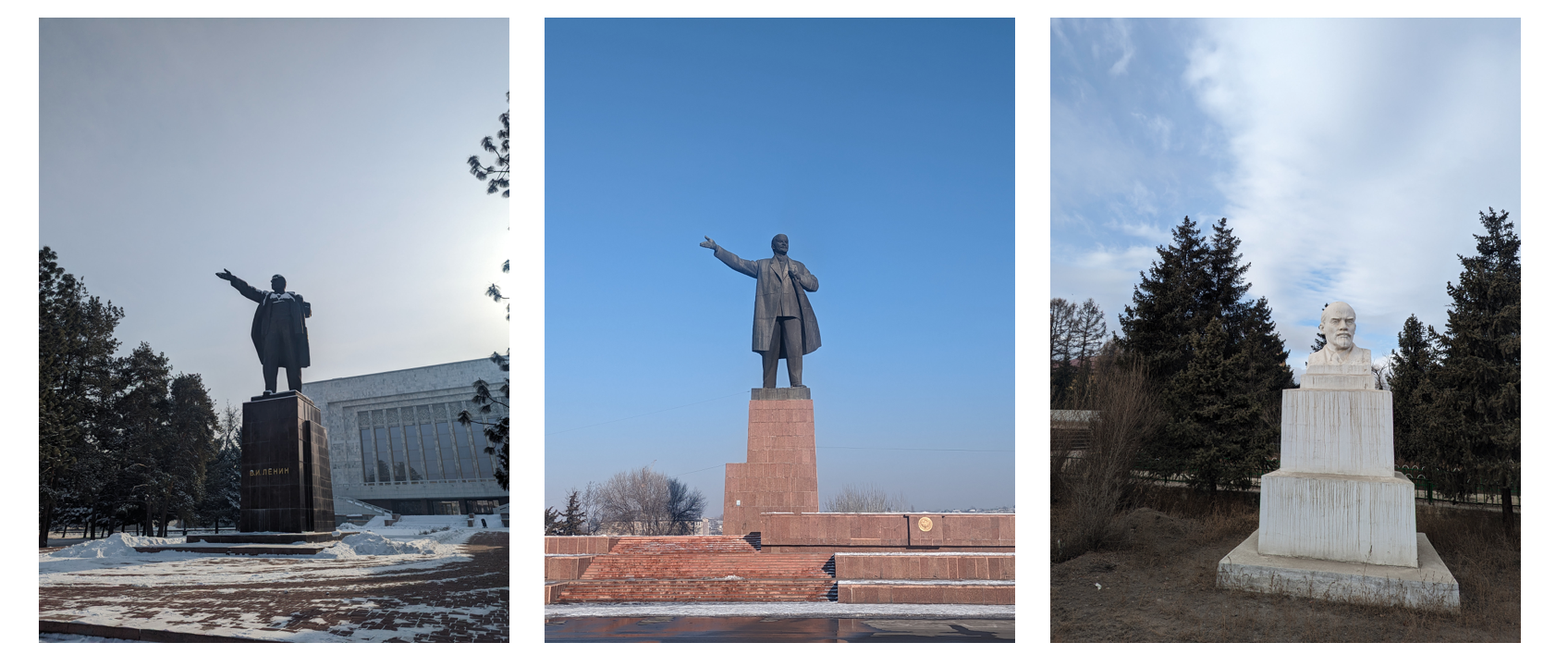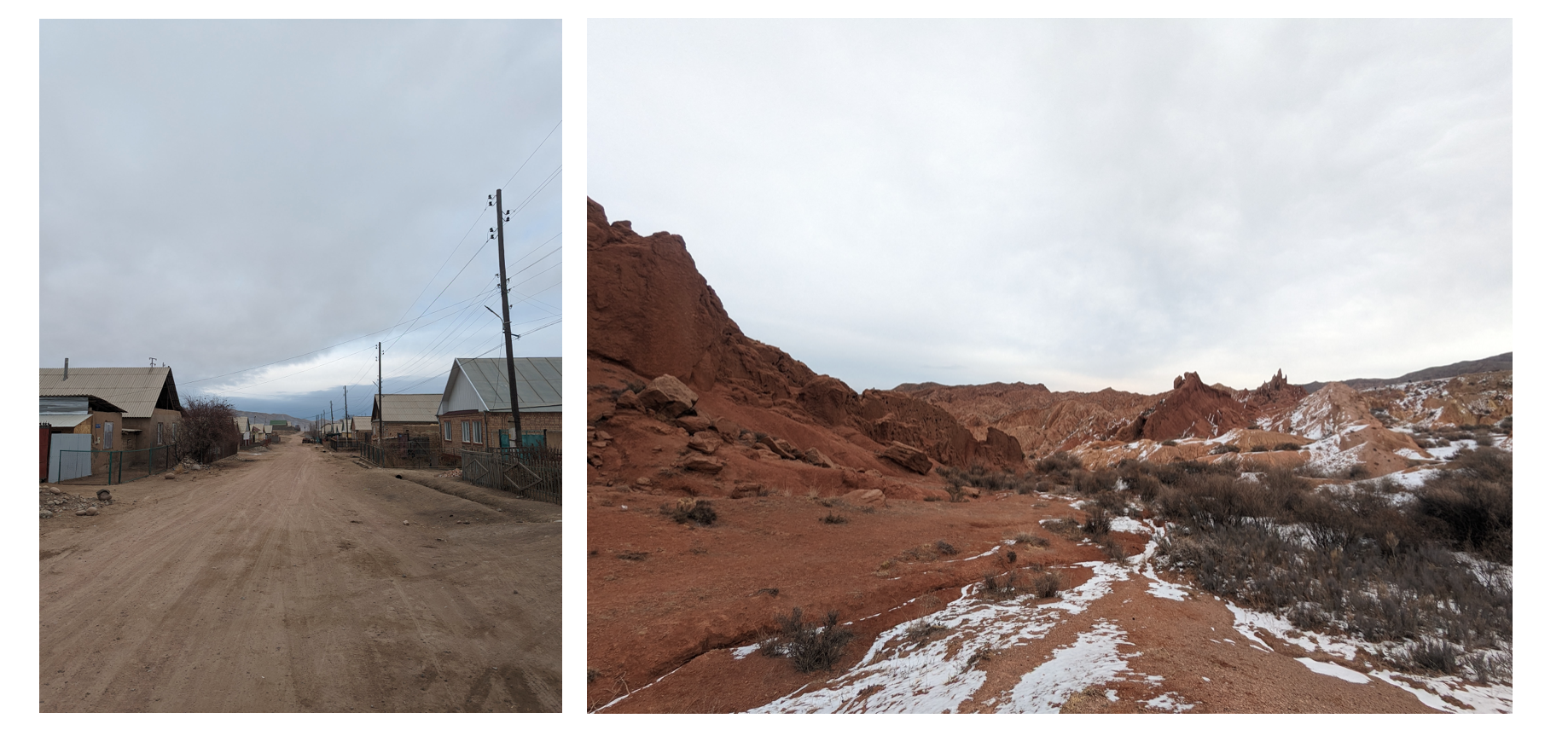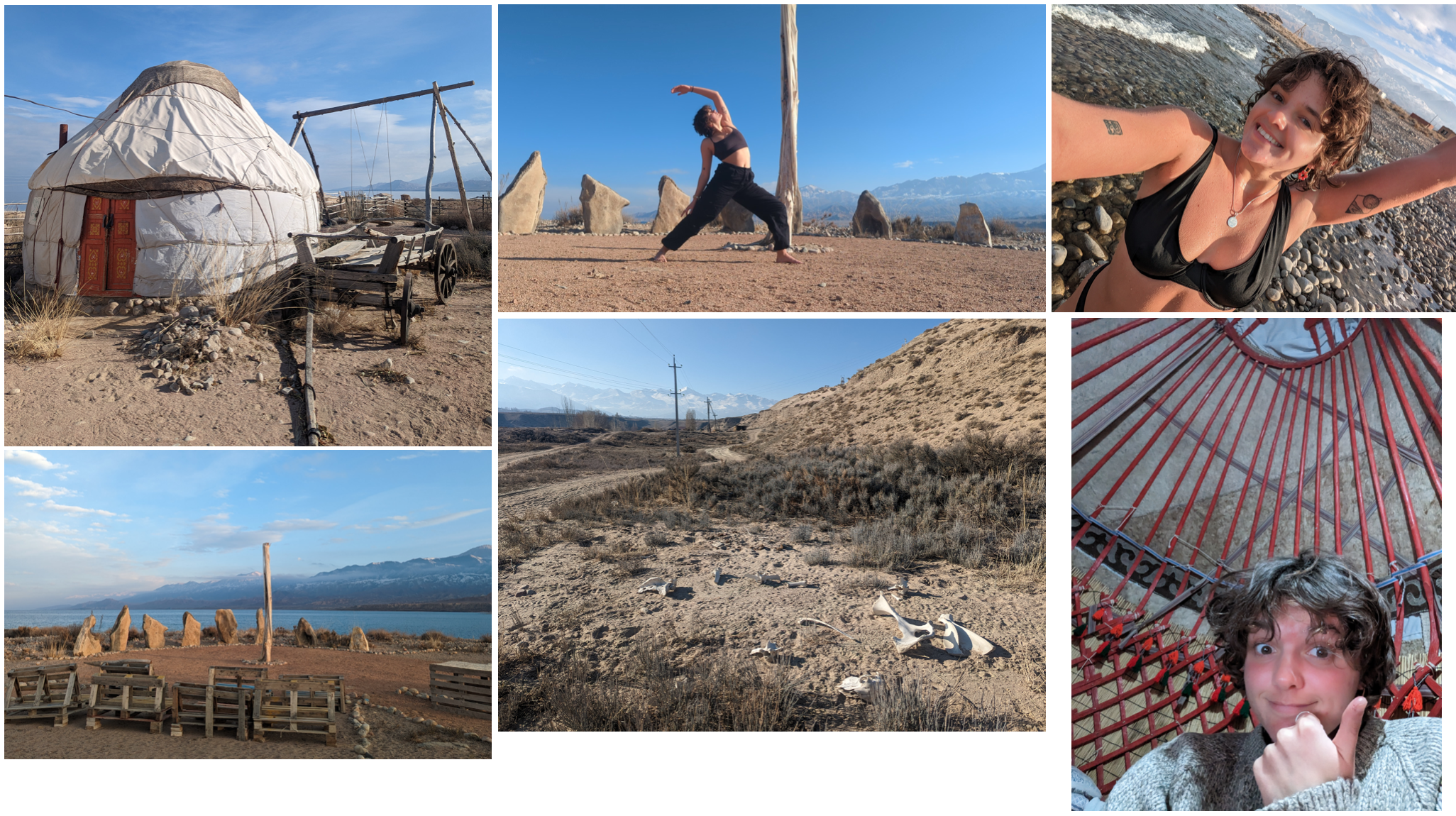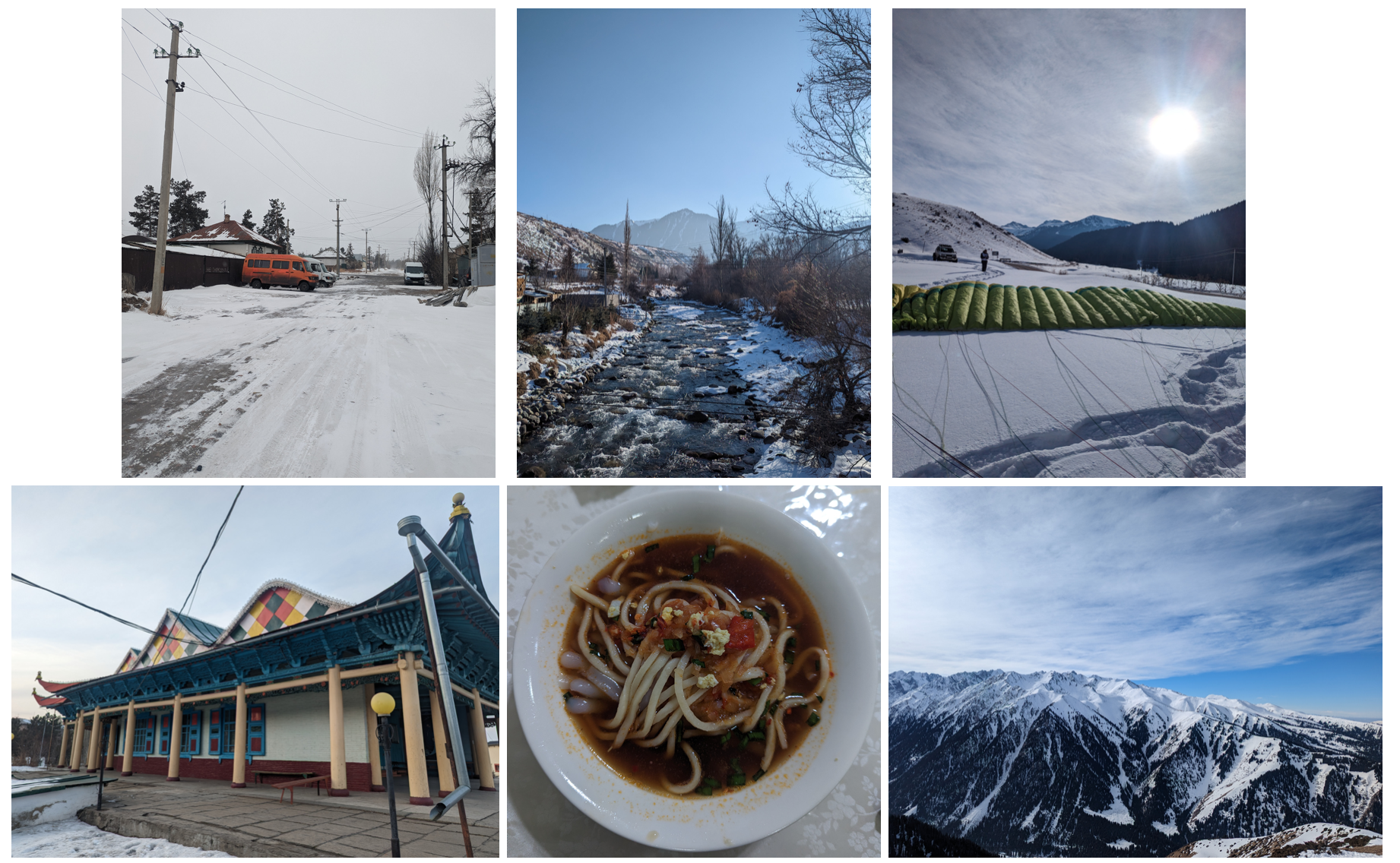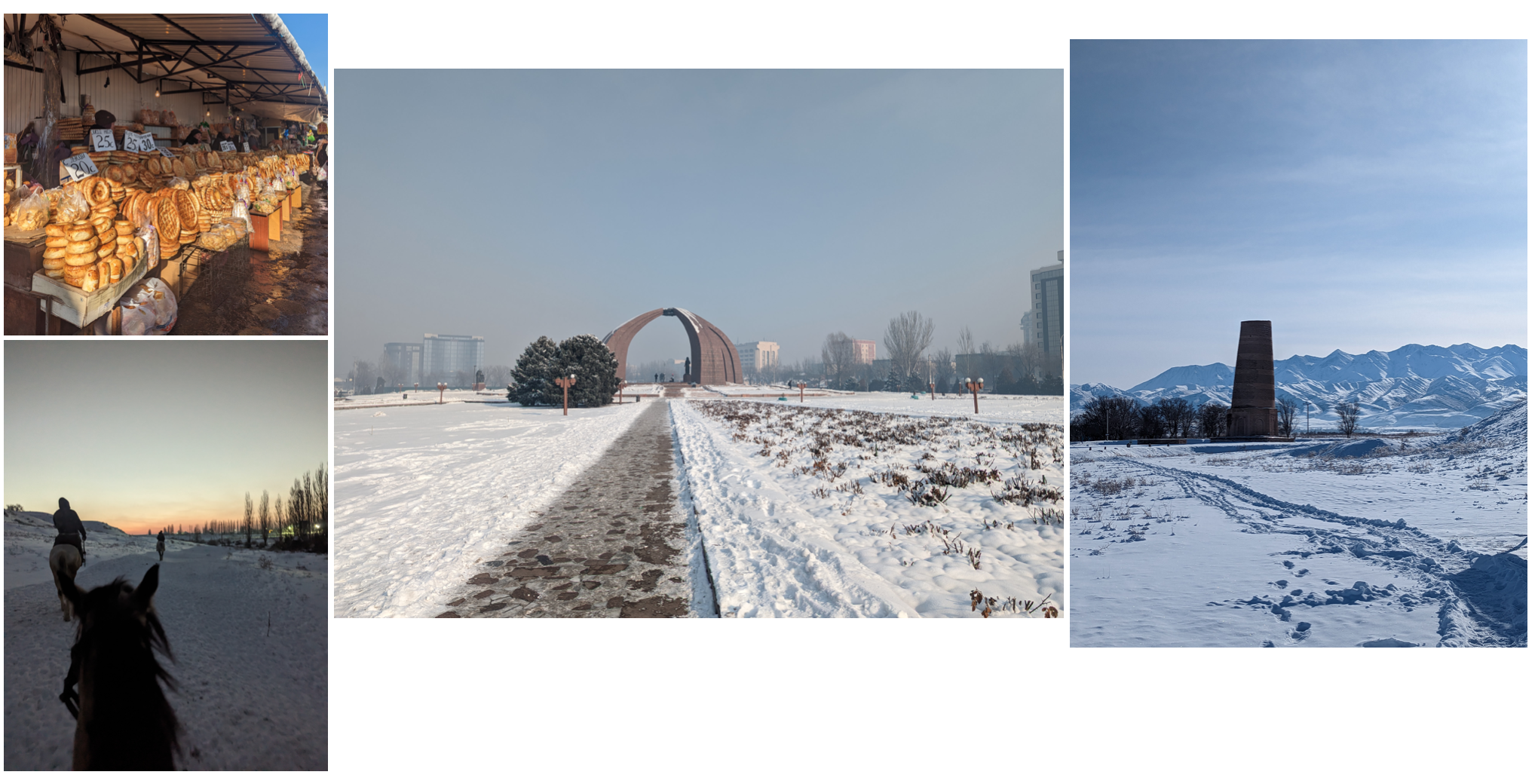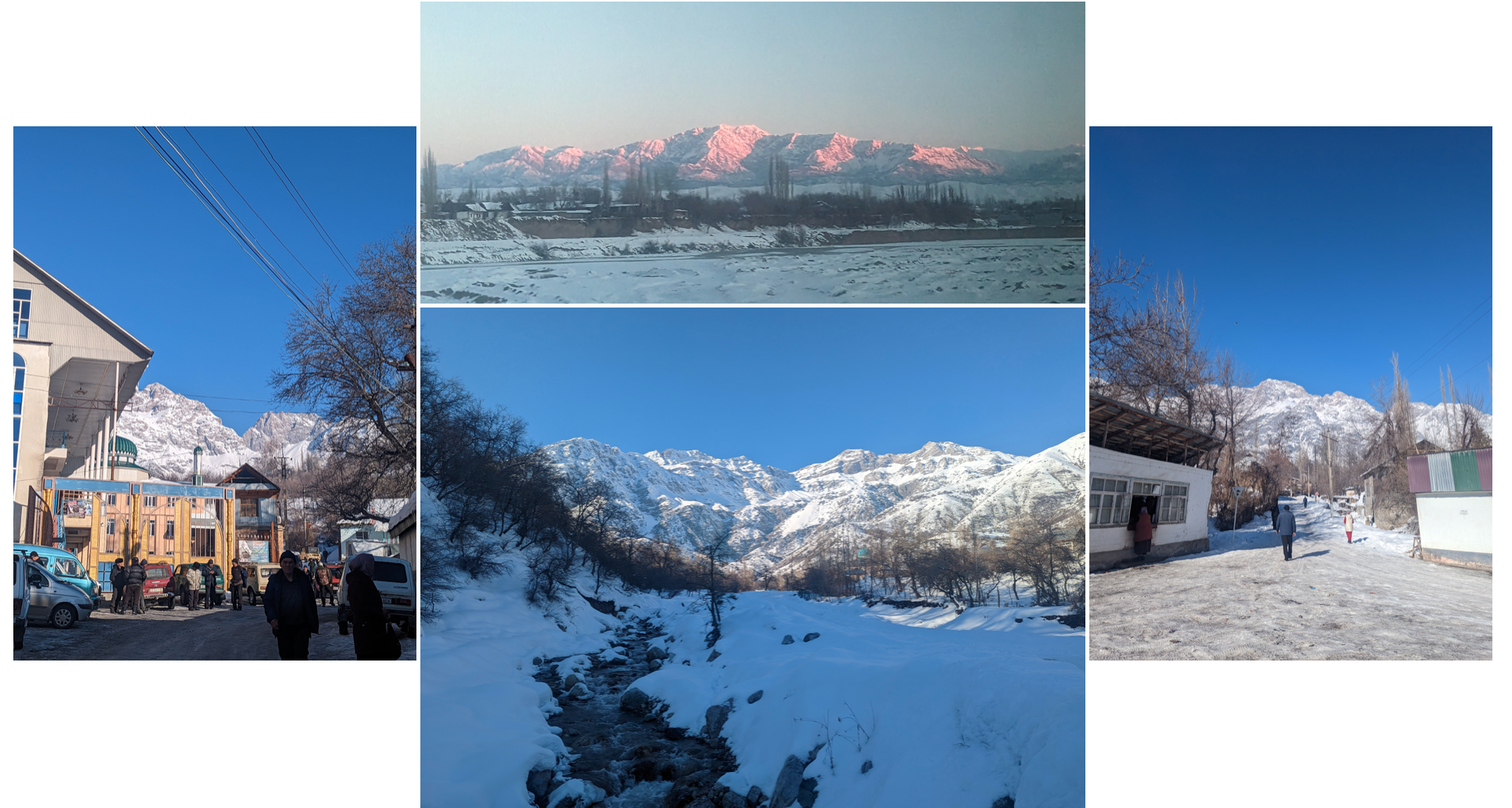We all know I didn’t stop going on about this gap year before I left England, and one specific thing I mentioned a lot was my plan to hike in the Himalayas. I thought I’d make it for the November trekking season, which I clearly did not, so I instead timed it for the beginning of the spring season. From the dining room table at home in England I landed on the Annapurna Circuit as my trek of choice. Unlike Everest Base Camp, it didn’t require me to fly to the start of it, it offered the most varied scenery and was a long length at 2-3 weeks. Perfect! It’s a very famous trek, and one that people flock to Nepal to do. From my basic research I thought I’d need to get join a group or get a guide once in Nepal, I decided to leave the specifics until later on. I met several people who had hiked the Annapurna Circuit on my travels, and through speaking to them I got a much better grasp on how to tackle it. I didn’t need a group or a guide, it was perfectly possible to hike it solo. Excellent news. This has now actually changed, with the Nepalese Government making it mandatory to hike with a guide from April 1st. So perhaps this account is one of the last of solo trekking in Nepal.
Teahouse trekking
The way trekking works in Nepal is with teahouses. Scattered along the trails are little villages, sometimes just 2 or 3 buildings, which always include a few teahouses. These are places where you can stay and eat. We found that you didn’t have to pay for accommodation if you paid for dinner and breakfast (and sometimes negotiated a bit!). The lodgings were very simple but did the job, and the food was surprisingly good in general. The menu is basically the same everywhere. For breakfast: porridge, eggs, tibetan bread (like a not sweet doughnut). For dinner: fried rice, noodles, spring rolls, momos (tibetan dumplings), dal bhat, and sometimes pasta and pizza and very occasionally burgers! Dal bhat is the famous trekking dish as it comes with unlimited refills, making it ideal when absolutely starving at the end of a long day. It’s made up of rice, dal (lentil or bean soup), a vegetable and potato curry, vegetables, pickle and a poppadom. It’s never exactly the same, with lots of variation in all of the elements. As elevation and remoteness increase, as do prices for food and hot drinks. To keep my costs to an absolute minimum (I am nothing if not consistently cheap) I took my own instant coffee and tea bags with me, meaning I could pay for a cup of hot water for around 40 - 80 NRP (depending on altitude) rather than 150 - 250 NRP for tea and coffee. A real treat was the ‘Snickers Roll’ (or ‘Sneckers Roll’) that appeared on the small dessert section of the menu. It was basically a deep fried snickers bar and it was delicious, if also heart attack inducing.
Preparation for the hike
I arrived in Pokhara, a hippy oasis of a city situated on the edge of Fewa lake, at the base of the Annapurna massif. I spent a couple of days decompressing after the craziness of India and getting myself ready to leave for the trek. Oh, I also celebrated Holi but more about that in a later post. Preparation began with getting the two permits needed for the trek, and finished with frequenting the hundreds of trekking gear shops in the town in search of the best price for the items I needed. I purchased a camel back, a headtorch, suncream, sun hat, trail mix and 6 chocolate bars (no I don’t have a problem…). I didn’t need to buy water purification tablets as I had my trusty filter water bottle. I hired a backpack, but made a last minute decision to stick with my own backpack. It’s not a hiking bag but I know it’s really comfortable and decided that was the most important thing. I raided the hostel library for guidebooks and made a rough plan of my route. Speaking to people at the communal hostel breakfast I was given the idea of extending my Annapurna Circuit trek to include two more treks, Poon Hill and Annapurna Base Camp. I made a note of how this would work in my journal, knowing it would ultimately depend on how I felt after finishing the circuit. I packed my bag, prioritising lightweight over everything else. Here’s what I packed:

The Annapurna Circuit

To being the trek I needed to catch a bus from Pokhara to Besisahar. At the bus station, as I munched on a subpar apple danish opportunistically sold by a man walking down the street, I saw a guy I recognised from the Holi celebrations waiting for the same bus. I remembered his name (Oli), it became obvious he did not remember mine. After putting my life on the line to prevent the bus from leaving without him whilst he used the toilet at a rest stop, we worked out we were planning to start hiking from the same point and decided to set off together. Like all bus journeys in Nepal, it was horrific and I think every tourist on the bus felt ill by the end. Arriving at midday in Besisahar, Oli and I farted around a bit getting some last minute bits and bobs. His absolute horror at my lack of poles made me decide to get some so I bought these at a trekking shop. We met back up and had a cold drink before setting off. Our first day was very short, just 9km and we’d reached Bhulbhule. We found a tea house and peered at our accommodation with some trepidation. I’d seen garden sheds with better infrastructure. The room was separated from the outside world by just a few wooden panels with huge gaps in between them. The windows were glassless, but there were wooden shutters that half shut over the space. The view was brilliant, a straight line of sight to the pale blue river below. We ate vegetable curry and thupka (Nepalese noodle soup) for dinner and chatted away happily. I realised at this point that the two of would get on just fine, we had a similar sense of humour and general disposition. We repeatedly said we would walk alone for some parts of the circuit, not being tied to one another. This did not happen! We walked together every day and slept in the same room every night for the next 11 days. And when we bumped into each other again after we’d parted ways we smiled and hugged happily rather than ran in the opposite direction, so I guess that means we enjoyed our time together!
Most people skip the first section of the Annapurna Circuit these days, opting to get a jeep along the new dirt track to one of the villages further along. After the bus journey, and looking at the dirt track, I can think of nothing worse. But it was good for us. It meant the first few days were very quiet. We had to walk a few short stretches along the track but in general there was an alternative path which avoided it. We were treated to green views of small fields growing rice and vegetables, lots of trees, suspension bridges crossing over the river and then crossing back over shortly after. Buffalos were used to plough fields with medieval looking equipment. Monkeys swung in the trees. A chorus of “Nameste!” followed us on our journey, with every person shouting it. It rained a lot on our second afternoon, saturating us to the bone as we marched heads down up a never ending staircase to our destination for the day, Jagat. We arrived dripping and were extremely thankful for our first hot shower of the trip. I washed my underwear using shampoo. Our belongings were left hanging on the line to dry as we ate dinner and drank a beer. Oli has a masters in Brewing and I forced him to give me a lesson in beer tasting, to compliment the chocolate tasting lesson I’d received in Turkey. The Australian couple next to us watched on with amusement. Their faces were familiar, they’d been at the last teahouse we’d stayed at. Over breakfast the next day we all gave in and spoke to one another properly. It took us another few days to learn their names (Patrick and Ceceilia) and to fully give in to our fate of walking together but we did in the end. From the second half of day 3 to day 13 all four of us trekked together, ate our meals together, and generally kept each other company. It was a harmonious partnership filled with wonderful conversation spanning from a reoccurring debate on free-will versus fate, discussions on the state of science, and tales of us shitting ourselves. Keeping it balanced as always. When we reached the teahouse on our 3rd night I realised I’d left a pair of my underwear hanging on the line in Jagat. My bare minimum four pairs of underwear had become three, oh dear.
On day 4 the scenery shifted from farmland to woodland, with so many flowers in bloom the air was heavy with their scent. The rhodendron were especially striking. This distracted me from the first bit of serious incline! I collected samples of each of the different flower species to sketch in my notebook later. When we emerged from the trees we were gifted our first real sight of mountains. A huge white wall towered on the horizon, and we marvelled at it over our stop for lunch. The villages were much more of the traditional Tibetan vibe now, with Buddhist prayer wheels lining the centre of the street and prayer flags catching the wind all around. The following day we would cross over the 3000m altitude mark so it was time to start taking our altitude sickness pills, with the hope of preventing any issues.
The evening of day 5 was the beginning of the serious coldness. I mentioned the interesting quality of the teahouse structures before, and their draughtiness was beginning to become an issue. Luckily, they usually had a fire in the dining area which meant you could avoid being bitterly cold until it was time for bed. But the bedrooms were undeniably, uncomfortably cold. When we arrived at a teahouse I would immediately change into my thermals and warm layers. I’d ask for extra blankets if they were available. We’d sleep in our wooly hats pulled over our eyes. After the first few equally freezing cold mornings, and the pain that putting on my ice cold bra and hiking clothes brought, I learnt to sleep with these clothes tucked up in bed with me, to keep them as warm as possible. My phone would also be in the bed with me, to reduce the negative effects of the cold on its battery. The discomfort was high. Whilst I didn’t enjoy this aspect, it was part of the overall experience and I wouldn’t change it one bit! Besides the cold, I loved the post-hike routine we’d fallen into. After changing into my thermals I would do some yoga in whatever space I could find. As it got colder this more often became the dingy bedroom with Oli being exiled onto his bed to make space, but the first few days were on rooftops with mountain views. I’d wash that day’s underwear and socks and hang them to dry. In the dining room Oli and I would sit and write our journals for the day, whilst Patrick played with a rubiks cube and Ceceilia read. Then we’d chat or read until it was time for dinner. After eating we’d chat some more, or play cards. At around 8/9pm we’d retire to bed (real party animals I know). I would do some russian practice and then sleep. In the mornings we’d be up at around 6/7am, changing into our hiking gear and packing up our bags. We’d eat breakfast, almost always porridge washed down with instant coffee, and I’d purify water for my camel back. I enjoyed having a routine again, and the whole thing was quietly wonderful.
Over 3000m the scenery changed. It wasn’t quite barren yet, but pine forests interspersed with stretches of bare earth. Not so much to my taste but on the more exposed high sections we were eye level with the soaring eagles so that made up for it. I had my first piece of kit failure on day 6. I went to take a sip from my camel back and was met with a mouthful of air. On inspection, the completely full 2 litre camel back was now completely empty. As I was questioning how there was no water dripping from my bag the answer revealed itself, my clothes had soaked up every last drop. Luckily the sun was so strong that after attaching them to the outside of my backpack they dried quickly. Now we were over 3000m we had to take altitude into account when walking each day, with it being recommended to sleep only 300 - 600m higher each night. We spent two nights in Manang, the biggest village in the valley, to acclimatise. On our ‘rest’ day we still hiked up to a temple, but at 5km it was nothing! Manang offered a real sense of luxury after the previous few days, there was much larger teahouse which had a lovely ski chalet-esque dining room that was properly warm. We indulged in the plethora of food options and whilst staying here I enjoyed a veggie burger, bean enchiladas, a chocolate pastry, a sausage sandwich, and proper french press coffee. Heaven! Knowing the facilities would only be getting more basic and the conditions more harsh made us savour it all that bit more. With thoughts of the future cold I caved and bought a very cheap North Face fleece (definitely not fake). After asking a very unhelpful lady at the information office we decided to attempt the side trek to Tilicho Lake which would add on 3 or 4 days. It was the highest, biggest lake in the world. We set off on this slight diversion and arrived to a village called Shri Kharka. The teahouse had a big dining area, with 360 degree views of the valley and mountains from huge windows. There were other groups here and we huddled around the fire watching as the weather changed sharply outside. The blue skies became grey and snow started to fall heavily. Soon, nothing but a wall of grey was visible from the windows, occasionally illuminated by flashes of lightning, and snow piled around the buildings. Talk turned to our chances of making it to Tilicho Lake. In the morning we could see the extent of the snow. It was enough for the guides to turn their groups back, and who were we to argue with their assessment! So we cut back to the main trail, and Tilicho Lake became known as TilichNO Lake. It was a real shame but what can you do. We saw our first yak herd and that cheered me up, as did the yak snow-drawing competition we had.
The next few days saw us push on to Thorong Pedi, the last stop before Thorong La Pass which was the highest point of the trek and what we’d been building up to. The scenery became more snowy and more barren, although we were lucky enough to see a herd of Blue Sheep (not as cool as they sound as they’re not actually blue). The evenings became colder and the water pipes would freeze. This made washing my face before bed and in the morning an interesting task that saw me melting snow in my hands and rubbing this on my face. So refreshing! We finally learnt what the stones on top of stoves in the teahouses were for: for holding in your lap for warmth, or taking to bed with you like a hot water bottle! All four of us had to share a room in Thorong Pedi and it was the climax of discomfort. The whole situation was dire - it was so so cold, and the room was so so grim. Putting on literally of my clothes I was strangely relieved to set my alarm for 3am, at least it meant the night would be short! I should mention that at this point I hadn’t pooed since Jagat, some 8 days ago. This really added to my personal discomfort.
After 11 days of hiking it was time to do Thorong La Pass, the highest mountain pass in the world. Up at 3am we packed up our bags and ate our breakfasts, watching the other groups set off. We had tactically decided to let them leave first, to tread down the snow for us. At 4:15am we set off. Patrick spotted a pair of forgotten crampons and I claimed them, hoping they’d increase my downhill speed from a pitiful 1mph to at least 3mph. Switching our headtorches on we located the narrow trodden path of the others, taking it and beginning to climb. To reach the pass we needed to climb 1000m, from 4400m to 5416m. You could feel the altitude at this point, the air was so thin. With each step I could feel the 12 plates of dal bhat sitting somewhere in my digestive tract trying to escape. I thought I might vomit. Loosening the waistbelt on my backpack helped and my last bowl of porridge finally settled. The overwhelming intrusion into my thoughts, however, was how cold I felt. The temperature was -16 degrees. The water in our camel back tubes had frozen. Snot flowed from our noses in a constant stream and then froze onto our faces (or in our beards if you’re Oli). My fingers cocooned together in my mitten for warmth but my thumb was left alone, extended on top of my pole. I searched my mind for any information I had on frostbite but came up short. Despite all of this, if you could see my face under my pulled up snood and pulled down hat you would see a childish grin. When the sun finally started to rise after 2 hours of walking, and the landscape was thrown into the morning light, I was so happy. I knew the sun would bring a bit of warmth, but the main reason was just how beautiful it made everything look. The snow glistened and so softly covered the rolling terrain. The sky was clear and the stars were just about visible still. The crescent moon too. After another 2 hours of walking we saw a little shack offering hot drinks. Ceceilia was really feeling the cold so we decided to stop for one. After seeing the exuberant prices, Oli and I decided to split one cup of hot water, adding a tea bag of our own to it. We crushed our fingers against the mug to capture as much warmth as possible. We were in good spirits, and looking around at the crowd in the hut we saw we were the only ones. This made us even more chipper as we secretly laughed at everyone else’s depressed and downtrodden looking faces. It was a funny sight. All of these people crammed in a tiny wooden hut, looking so damn unhappy. After our hot drinks we continued for 1 last hour. We stopped for a short break to remove some layers as the sun was finally warming us up, and after a few more minutes of walking Ceceilia cried out. I was behind her and saw it next. The bundle of flags signifying the pass!
It had taken almost 6 hours but we’d made it to the Thorong La Pass. We were cradled in the nape of two mountains. Where we’d come from the scenery was snow covered. Where we were going was completely snowless. The valley was in the rain shadow of the mountains so it was incredibly barren, similar to the Tibetan Plateau. It was a bit anti-climatic, it just hadn’t been as difficult as I was expecting. I guess I’d been very lucky in not having any altitude related issues (beyond constipation). The cold and dark had been challenging, but once the sun had risen the time had passed so quickly. I still felt like my celebratory snickers was well earnt and ate it joyously. We took the obligatory summit photos and then hurried off the pass before the ominous looking clouds came any closer. What followed was an arduous 2000 metres of descent which we absolutely zoomed down (thank you crampons!), destroying my knees and rubbing the side of my left heel horrifically. I reached the bottom mentally and physically drained and I was fighting to keep my eyes open on the last section. It had been a long old day. We hiked 19.5km, 1000m up and then 2000m down, all starting at 3am. I napped immediately once we’d arrived to the teahouse. On waking up I finally had a bowel movement! I showered for the first time in 6 days, and honestly felt like a new woman. We enjoyed one last meal as a four, and one last game of Irish Snap that evening. Oli was short on time so was catching the bus directly from Muktinath, our current location, in the morning. We said our goodbyes in the morning, and it felt like the great Annapurna Circuit trek was winding down.
Ceceilia, Patrick and I continued walking for 2 more days, exploring the Mustang region in the barren valley. The village of Kagbeni was very cool, a maze of narrow stone streets. We stayed at a wonderful guesthouse called ‘YacDonalds’ and enjoyed a ‘Happy Meal’ for dinner which was comprised of a yak burger, chips, salad and seabuckthorn juice. Wonder what inspired that… On day 13 we reached Jomsom, the end point of the Annapurna Circuit. 171km and 8,500m of ascent completed! It felt pretty amazing to finish it. But I wasn’t quite done with trekking yet…
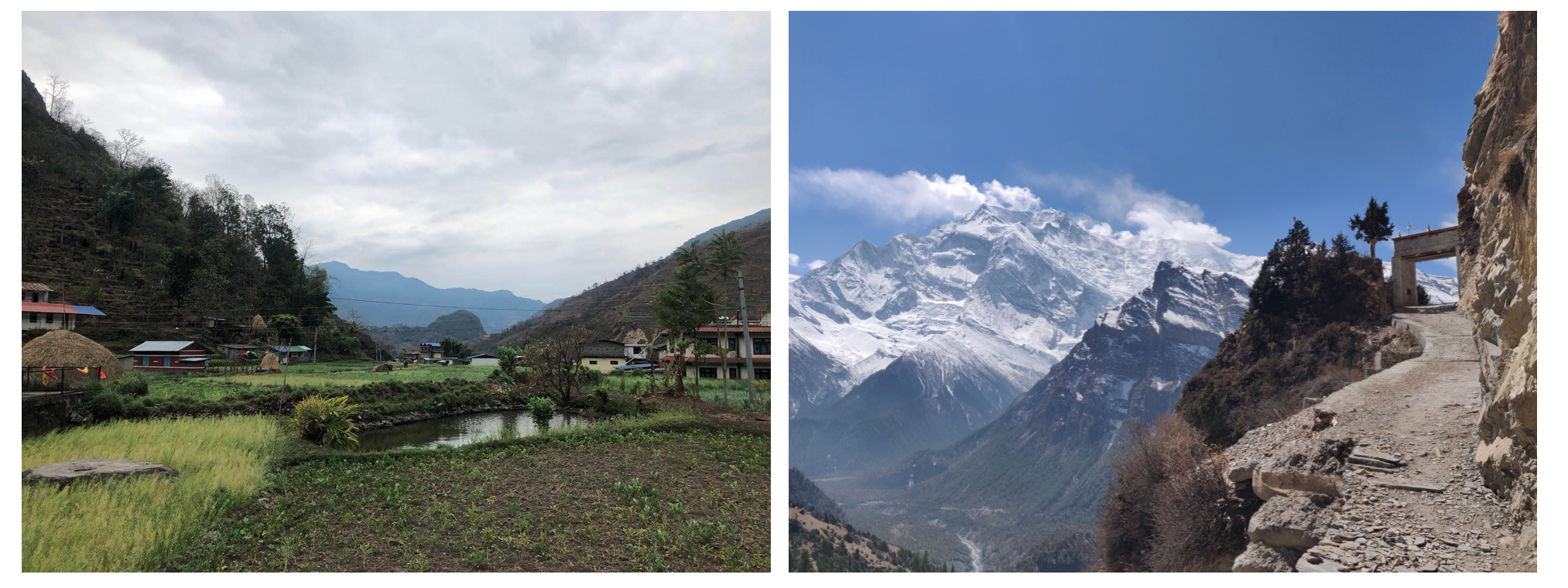
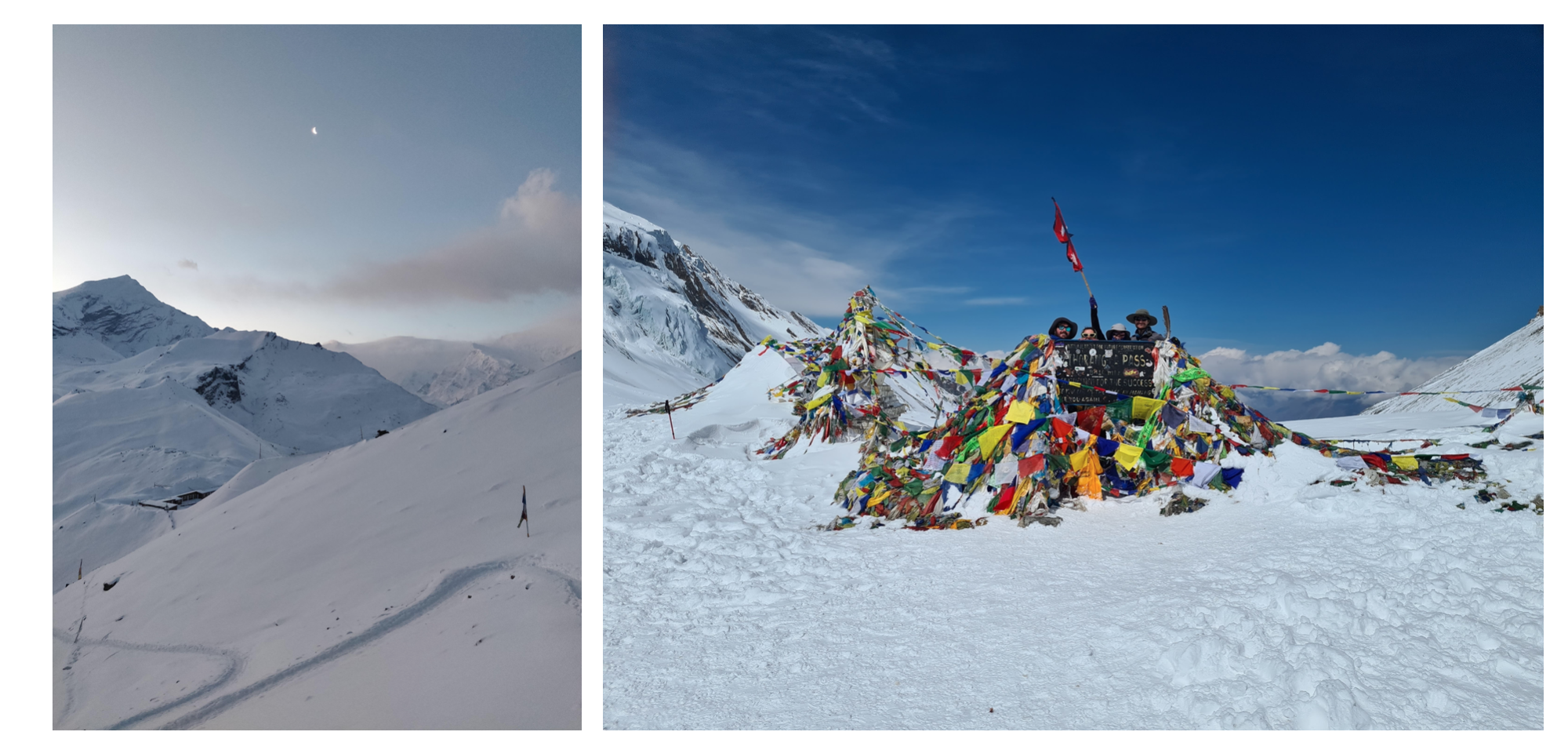
Annapurna Base Camp (ABC) and Poon Hill

After finishing the Annapurna Circuit I was fully in love with trekking and absolutely not ready for it to end, so I decided it wouldn’t! My legs somehow felt as fresh as on day one; my backpack had settled into the grooves of my body; I had mastered the pole-walking technique. The only casualty was my left heel which had a huge blood blister on it. Confident that this wouldn’t cause me too many issues, I bought a bus ticket to Tatopani to begin the trek to Annapurna Base Camp. I could have walked this too but decided that would take a bit too long (I did have some other things I wanted to do in Nepal) and it was mostly on the road. I arrived in Tatopani at midday and did a little bit of shopping to stock up on essentials (instant coffee and apples). I set off on my own for the first time, having said goodbye to Ceceilia and Patrick on the bus. No more company whilst walking, or help in making decisions. It was a bit nerve-wracking as I’d gotten quite used to being in a little gang, but I was excited for the new experience.
I didn’t know how far I would walk that afternoon, with there being two villages that I could overnight in. I started off in my sandals to give my huge blister some air, but had to quickly change to my boots when it started to rain. The scenery was shockingly different to the barren valley after the pass, with greenery everywhere and lots of small farms. I walked a lot faster than I had been, perhaps out of nervousness of being alone (I did receive some interesting comments from men and school boys). I eventually stopped at the further village, feeling absolutely exhausted. The following day I continued alone, but much happier. I didn’t feel rushed in my walk like the previous day, and could really take in the scenery whilst being alone. Especially the smell of the flowers. I made friends with a crow which followed me for a while (it really didn’t take long for me to go a bit mad). I reached the rather busy village of Ghorepani and had lots of time to relax in the quite luxurious teahouse, filling it with sketching in my journal and listening to podcasts. The next morning I was up at 4am, ready to hike up to nearby Poon Hill for the sunrise. It was only 400m higher than the village so didn’t take too long. I enjoyed a hot chocolate at the top, warming up my hands and insides as I watched light enter the snowy landscape. Sadly, it was quite a cloudy morning so I couldn’t see the vista of huge mountains that were apparently behind us. The low clouds in the valley looked pretty cool though, it was the first time I’d been properly above clouds whilst on land. The way they caught the sun as I made my way back down, and floated up and down, was mesmerising and I stopped often to watch. After breakfast I set off, having another relatively short day which finished at 12:45pm. Whilst I didn’t hate having lots of downtime in the afternoons, it did start to feel like I was just killing time. I decided I would start walking more each day, wanting to push myself further, even though it would likely mean walking in the rain. The weather system in this valley was like clockwork, every day around 1pm it would rain heavily. Sometimes just for an hour, sometimes for the rest of the day. For my last relaxing afternoon I enjoyed chatting with a lovely family from Leicester and played cards with them. The next 2 days saw me walk 30km to Machhapuchhre Base Camp (MBC). The scenery was always the same, rich forests filled with huge bamboo plants and twisted looking trees along one side of a valley. Mountains peeped through the gaps in the tree canopy, ever present and getting ever closer. It was very beautiful. The final stretch was more barren. I had to cross the river over a very dodgy bamboo bridge to walk along a secondary path to avoid the recent (the previous day…) avalanche on the main path. I came across MBC suddenly as the falling snow was thick and visibility poor. For the last time on this trek, I set my alarm for before sunrise. Setting off at 5:30am, with my headtorch shining forward, I tried to find the path through the snow, finishing off the last hour of walking to Annapurna Base Camp (ABC) as dawn broke. I reached the flag covered sign post telling me I’d made it at 6:30am, it looked very similar to the one at Thorong La Pass but it felt very different to reach this one alone. It felt more personal. I found the highest point at ABC, which stood at 4100m, and sat down to watch the sunrise over Machhapuchhre and illuminate Annapurna I. I ate my celebratory snickers bar, and it tasted delicious even if it was a bit early! Annapurna I is the most dangerous mountain to climb in the world. It’s 8019m tall, and 38% of people who attempt to summit it die. You’re reminded of this by the memorial to several climbers located in ABC. I spent a long time sat on that rock, my eyes pouring over the mountain basin I found myself in. It was one of, if not the, most spectacular locations I’d ever sat in. This moment of awe was slightly tarred by the Nepalese couple doing a photoshoot over me loudly, and the man filming a tiktok dance 20 metres to my right. But still, it was a very special morning. I reflected on the last leg up to Thorong La Pass and realised that it was actually very challenging! I returned back to MBC where I had breakfast and collected the rest of my belongings. I begun the journey back on myself, along the same path to the fork in the valley. It took me a day and a half and I saw lots of familiar faces walking in the opposite direction. It was nice to let them know how beautiful the view waiting for them at the end of the valley was. After taking the lefthand path at the fork, rather than the righthand one I’d come along, I reached Jhinu and decided to visit the hot springs down by the river. The hot water felt amazing after days without it, my muscles welcomed it. I pushed on for one final time, up a really demanding and seemingly never ending set of steps to Ghandruk. I was dripping with sweat when I arrived into the strange Gurung town, which seemed so big after weeks of only seeing small villages. It took me a while to find a room which I could have free of charge, but eventually found one at a little homestay. The family were very friendly despite not speaking much english, and insisted that I dance the Nepali way with them and be in a tikitok video. It was fun but if I’m honest I was completely exhausted at this point and ravenous for some dinner. I had been told my dinner would be served at 6:30pm, but when I saw the woman arrive back to the house with a raw chicken at 7pm I resigned myself to the fact it would be a long wait. I absolutely inhaled my last dal bhat, pleased that my hand eating technique had improved enough to keep up with my grumbling stomach. The next morning I took my final walk to the bus stop, only around 30 minutes away, and caught the bus back to Pokhara. The last 8 days alone had been a lot. On numerous occasions I’d been soaked to the bone from the torrential rain, struggling to see as water poured off my hood in front of my face. I’d struggled to dry my clothes, wet from the rain or camel back leaks, in the cold and damp teahouses. I’d endured the late afternoon hours waiting for dinner, thankful that my kindle touchscreen responded to being tapped by mittens but ultimately being too exhausted and hungry to read for long. Sounds pretty gruelling right? It absolutely was at times, but I’d enjoyed walking alone a great deal, and if I’m being honest, I relished the difficult bits just as much as the highlights. I loved it all.
On the bus, I watched the mountains from the window become more distant. I could feel just how special the last 3 weeks had been in that moment. It’s strange to be aware of the significance of something as it draws to a close, a real luxury to be so close to it and to appreciate it so fully.
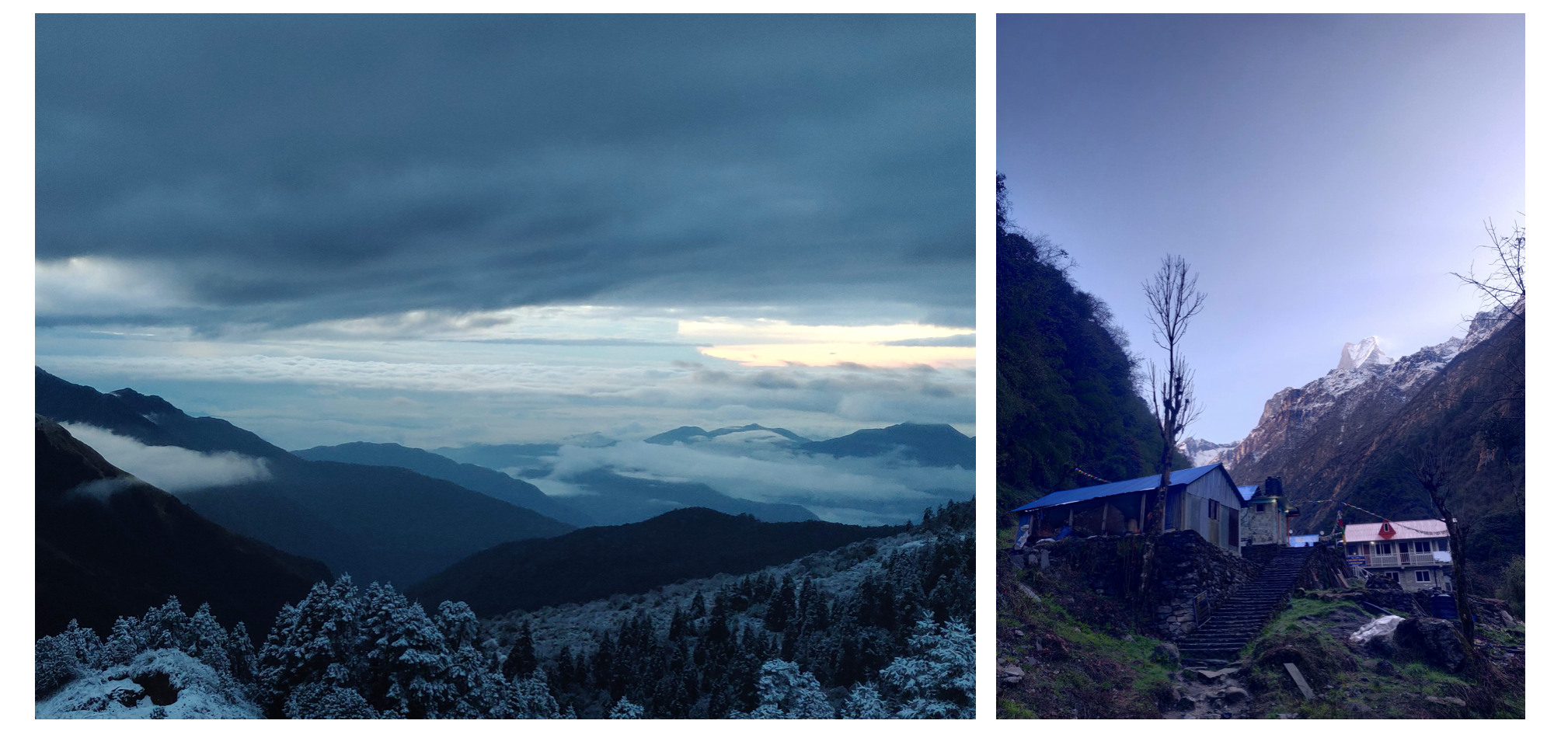
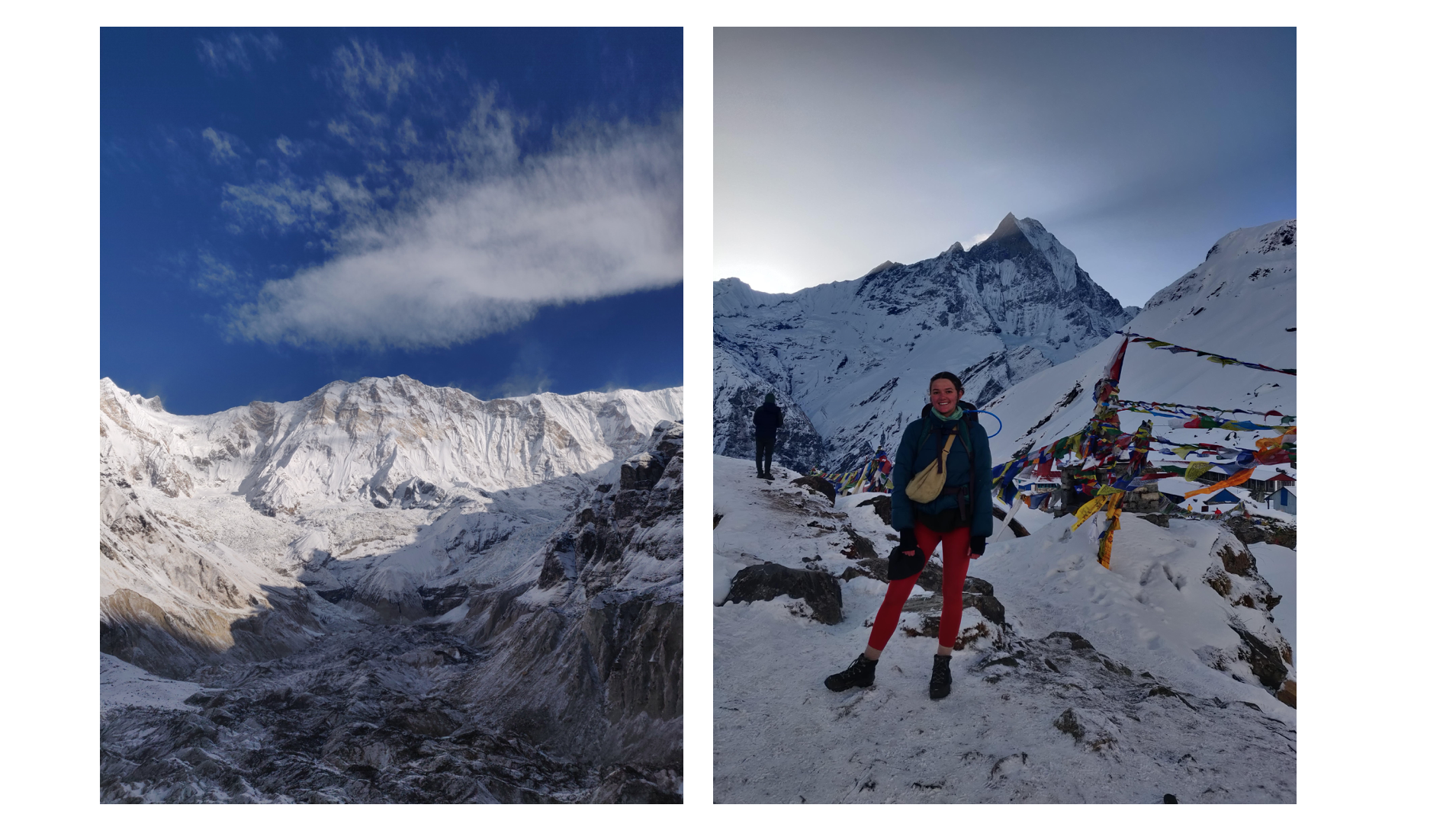
Last word
Whilst I knew I wanted to trek in the Himalayas for years, I hadn’t actually spent much time thinking about it or building expectations around it. Maybe this is partly why I was utterly floored by the experience. It meant, and means, so much to me. From the act of walking everyday for 20 days, to the amazing company I kept on the Circuit, to building a routine in freezing cold teahouses, to being alone on the ABC part, it was all so delectably precious. The opportunity to walk the entire Circuit with the same 3 people was wonderful, it elevated the trek. Equally, walking ABC alone was wonderful, the space it provided to think and reflect and experience more intensely. But what’s so special was being able to have both and compare them. To see what difference having company brings, and what you can only gain from being alone. I mean, what an insight! Something else I gained is a very strange tan - extremely tanned hands and nothing else. My hands were always exposed to the very strong sun whilst walking due to them wielding walking poles, whereas the rest of me was usually covered up. It’s an interesting look, and one several people have commented on. Hopefully this impact doesn’t last too long… To end this rather long post, trekking made me incredibly happy and I will definitely be doing some more long distance hikes. I want to thank Oli, Ceceilia and Patrick for being the very best hiking companions. Memories of you guys are inextricably linked to my memories of the Circuit and I could not be happier about that.

If you’re interested in seeing some photos of my trek, I’ve put together a google photos album which you can find here:
https://photos.app.goo.gl/5XNiSfQ29J2HcpCAA
Total stats

